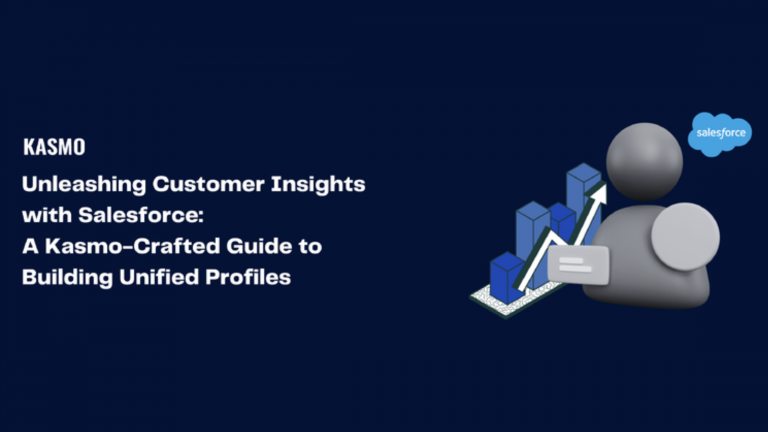Introduction
In an era of customer-centric business models, understanding your customers at a granular level is not just an option—it’s a necessity. This is where Salesforce, a leading CRM platform, comes into play with its functionality of creating unified customer profiles. These profiles allow businesses to collate, analyze, and utilize customer data from multiple sources, providing a holistic view of the customer journey.
Kasmo, a rapidly growing boutique IT consulting firm, specializes in Salesforce, Data, Analytics & AI, Digital engineering, and Industrial Engineering. With a global presence and a team of over 250 members, many of whom are alumni of Salesforce and other tech giants, Kasmo is uniquely positioned to provide insights into creating these unified profiles in Salesforce.
Step 1: Ingest Raw Data from Data Sources
The first step in creating a unified customer profile is to ingest raw data from various data sources. This data can come from bundles, data extensions, Amazon Simple Storage Service (S3), and other systems. Kasmo emphasizes the importance of ensuring data quality at this stage to avoid “garbage in, garbage out” scenarios. Our experts can help you identify and integrate the most relevant data sources for your business needs.
Step 2: Map and Model Data
The next step is to map and model this data. Salesforce’s Customer 360 Data Model standardizes data from multiple sources into a readable format that can be easily mapped. The data from your data stream needs to be mapped to objects, like Party Identification and Individual. Kasmo’s team, with its rich experience in data mapping and modeling, can help you navigate this process smoothly and efficiently.
Step 3: Create Identity Resolution Rulesets
Once the data is modeled and mapped, it’s time to create identity resolution rulesets. These rulesets help to match and reconcile data, enabling the unification of profiles across your various data streams. Kasmo’s team brings to the table an extensive background in creating effective identity resolution strategies that accurately consolidate customer identities.
Step 4: Create Unified Individual Profiles
The final step is the actual creation of unified individual profiles. Once the rulesets are set up, Salesforce creates unified individual profiles that can be used for segmentation and in activations. Kasmo can assist you in harnessing the full potential of these profiles, ensuring they are effectively used to drive business decisions and customer engagement strategies.
Conclusion
Creating unified customer profiles in Salesforce is a powerful way to deepen your understanding of your customers and deliver personalized experiences. With Kasmo’s expertise in Salesforce and its commitment to delivering world-class solutions, you can confidently navigate this process and transform your customer data into valuable business insights.
Also Read:-What Is Salesforce Marketing Cloud? Uses, Components & Benefits

